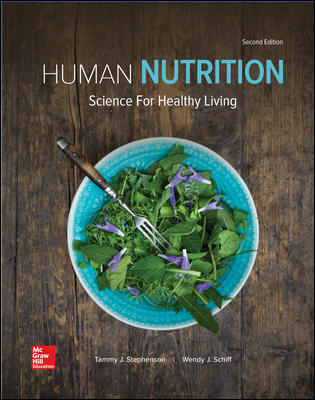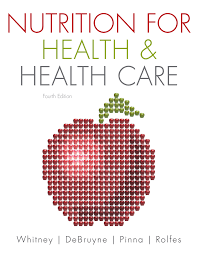Description
Test Bank Human Nutrition Science for Healthy Living 2Nd Edition By Tammy Stephenson
Human Nutrition, 2e (Stephenson)
Chapter 2 Evaluating Nutrition Information
1) Which of the following statements is false?
A) A person with a Ph.D. who promotes drinking vinegar as the cure for lung cancer is practicing quackery.
B) According to scientific research, most dietary supplements provide considerable health benefits.
C) The RDN credential is legally protected.
D) Disclaimers are clues that a product is not likely to live up to your expectations or the manufacturer’s claims.
2) Which of the following statements is true?
A) The EPA regulates the labeling of dietary supplements.
B) Medicinal herbs must undergo testing for safety and effectiveness by the FDA before they can be marketed.
C) Most dietary supplements have been thoroughly researched and critically evaluated by scientists.
D) The FDA can recall a dietary supplement when there is evidence that it is harmful.
3) Which of the following statements is true?
A) A scientist’s professional affiliations and sources of financial support may influence his or her research findings.
B) The results of one study are usually enough to convince the majority of nutrition scientists to adopt new ideas about nutrition-related topics.
C) Dietary recommendations are generally based on the findings of one well-respected team of nutrition researchers.
D) Since 1995, nutrition information has undergone few updates, because scientists have discovered all of the nutrients and determined their functions.
4) Which of the following statements is true?
A) When interpreting results of their studies, researchers generally seek to include some bias into their analyses.
B) Scientific studies to investigate the same question can have different findings.
C) Control groups are not as important to nutrition-based research studies as they are to other types of research.
D) A single-blind experiment is one in which neither the investigator nor the subjects know which treatment group each participant is a part of in the study.
5) A group of scientists suspects that certain dietary practices are partially responsible for different rates of hypertension among adults of different ethnic/racial groups. To test their hypothesis, the researchers examine data concerning the different population groups’ hypertension rates and their past dietary practices. This research is a ________ study.
A) retrospective
B) case-control
C) prospective
D) hypothetical
6) A group of registered dietitian nutritionists is planning to conduct a scientific study to investigate the effects of eating honey on behavior in school-aged children. To start, the researchers will
A) analyze the hypothesis.
B) make observations.
C) identify relationships between variables.
D) gather data.
7) A medical researcher reads an article in Today’s Health-Conscious Woman magazine about the benefits of using the phytochemical capsaicin to treat knee pain. She asks 10 people with arthritic knees to rub a cream that contains the phytochemical on their knee joints for 2 weeks. At the end of the 2 weeks, the researcher asks the subjects whether their knee pain improved, stayed about the same, or worsened during the treatment period. After collecting responses from the people, the researcher reports the results of her study on a popular TV show that is hosted by a doctor. Based on this information, which of the following statements is true?
A) The researcher used a standard scientific design for research involving human subjects.
B) The researcher reviewed scientific literature regarding the use of capsaicin to treat knee pain.
C) The researcher subjected the results of her study to peer review.
D) The researcher did not divide the subjects of her study into control and treatment groups.
8) A group of scientists conducts a scientific study to investigate dietary factors that influence the development of breast cancer. Which of the following activities is NOT likely to be a component of their research efforts?
A) Making observations and formulating a hypothesis
B) Submitting an article describing the study to a peer-reviewed journal
C) Posting findings at the main researcher’s personal website
D) Collecting data and analyzing results
9) According to the observations of a nutrition scientist, laboratory mice are healthier when their diet contains physiological levels of vitamin D than when their diet lacks the micronutrient. The scientist hypothesizes that mice will be less likely to develop cancer when they consume a diet that supplies megadoses of vitamin D. Based on this information, the scientist is ready to
A) plan a retrospective study involving at least 5,000 laboratory mice to test the vitamin D and cancer hypothesis in mice.
B) design a double-blind study to test the vitamin D and cancer hypothesis in mice.
C) conduct a controlled laboratory experiment to test the vitamin D and cancer hypothesis in mice.
D) set up an experimental epidemiological study to test the vitamin D and cancer hypothesis in





Be the first to review “Test Bank Human Nutrition Science for Healthy Living 2Nd Edition By Tammy Stephenson”